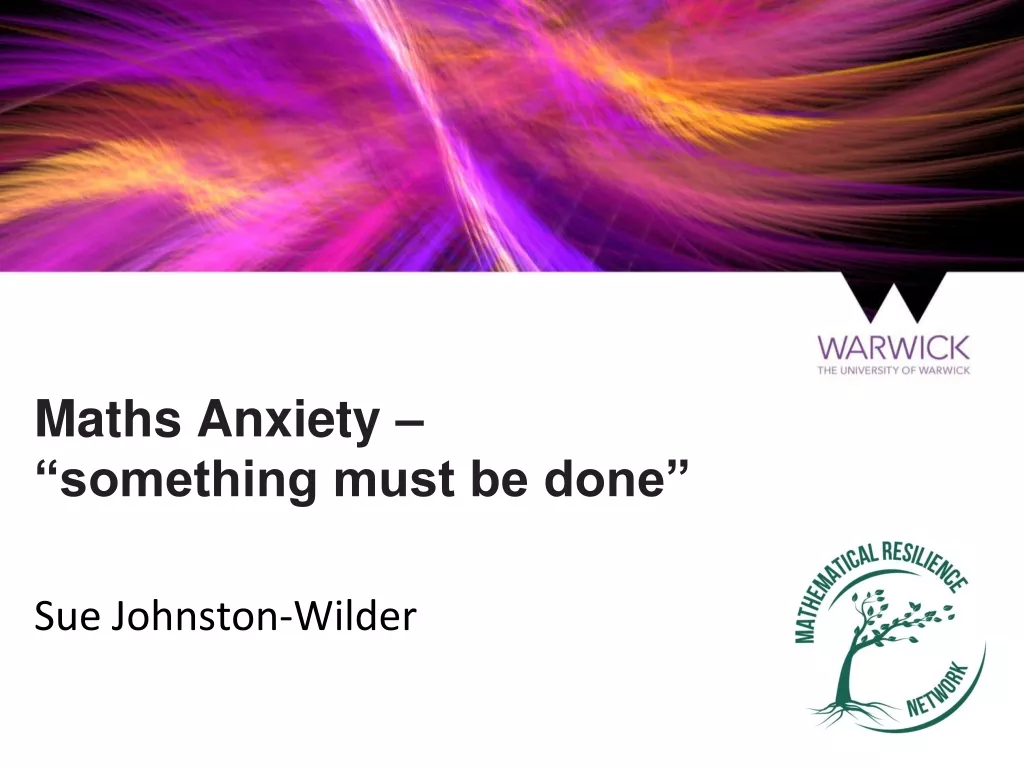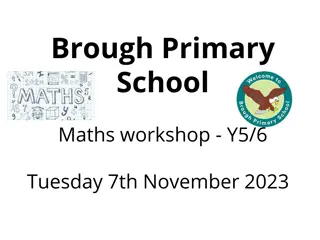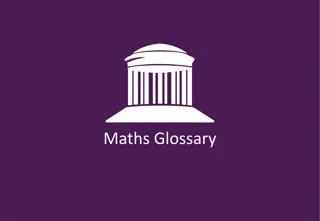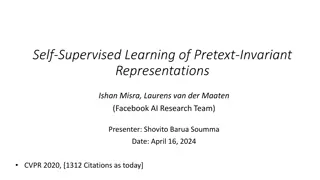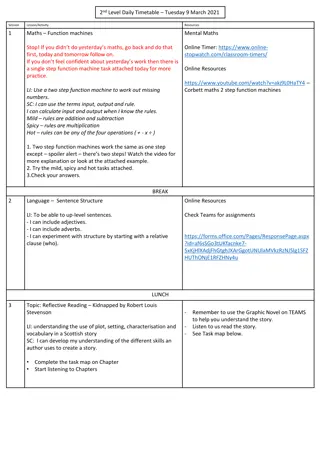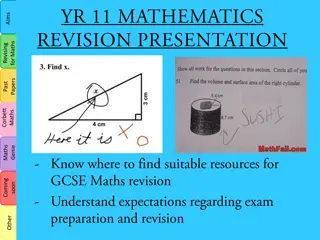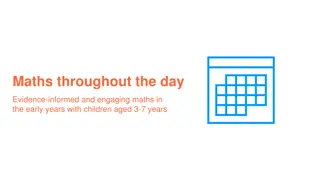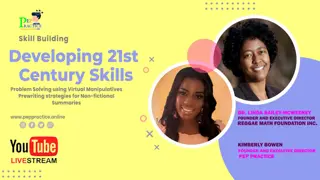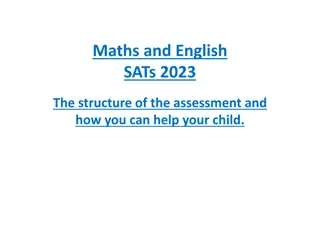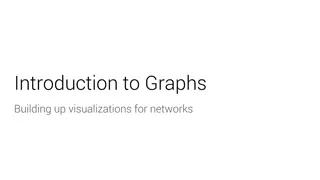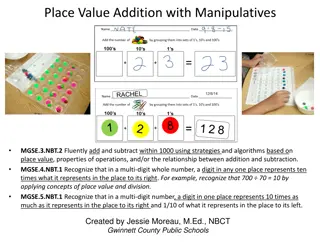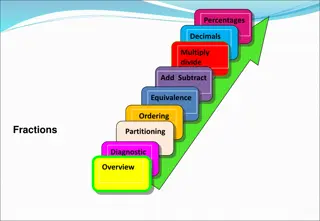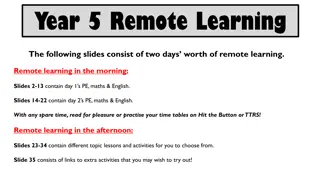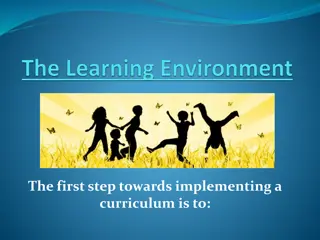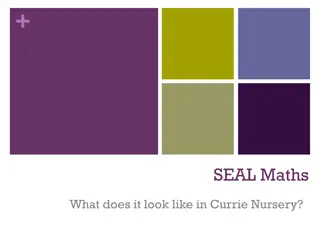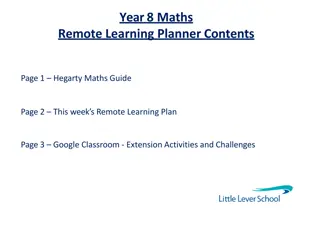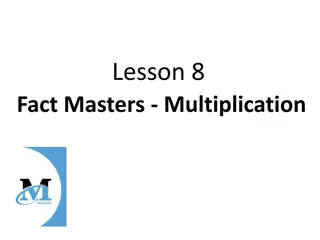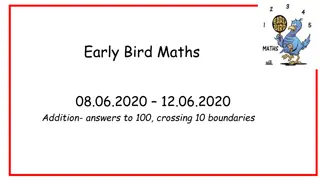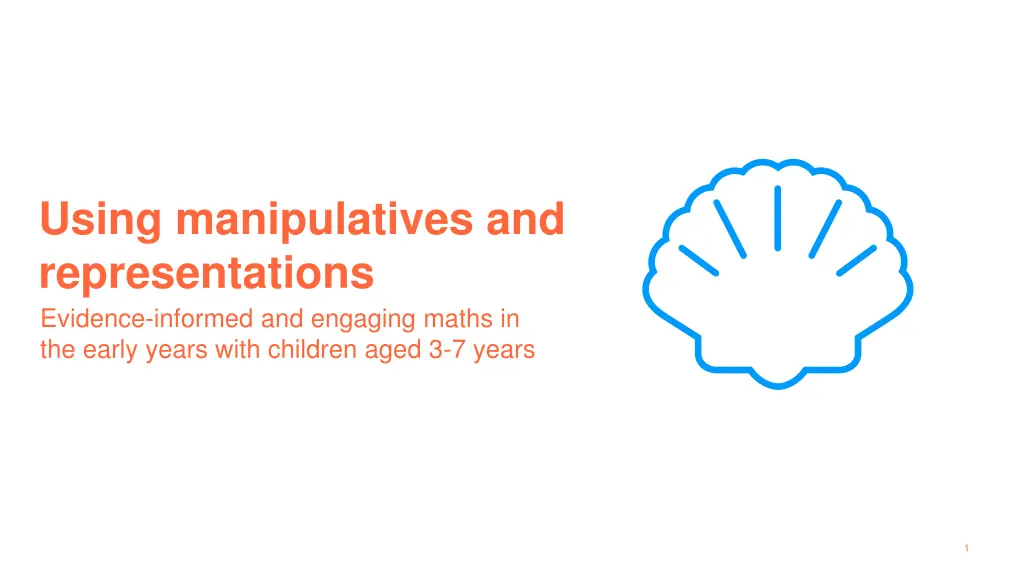
Engaging Maths with Children: Using Manipulatives and Representations
Explore the importance of manipulatives and representations in early years maths education for children aged 3-7 through evidence-based strategies. Enhance learning experiences with interactive tools and visual aids, fostering a deeper understanding of mathematical concepts.
Download Presentation

Please find below an Image/Link to download the presentation.
The content on the website is provided AS IS for your information and personal use only. It may not be sold, licensed, or shared on other websites without obtaining consent from the author. If you encounter any issues during the download, it is possible that the publisher has removed the file from their server.
You are allowed to download the files provided on this website for personal or commercial use, subject to the condition that they are used lawfully. All files are the property of their respective owners.
The content on the website is provided AS IS for your information and personal use only. It may not be sold, licensed, or shared on other websites without obtaining consent from the author.
E N D
Presentation Transcript
Using manipulatives and representations Evidence-informed and engaging maths in the early years with children aged 3-7 years 1
Framing for your context complete before presenting Before using this presentation, please: Ask educators to bring their maths planning/programming with them. Add context and framing to slide 3 Edit slides 3 and 4 as needed Have printed copies of the examples on slide 10, or be sure to share a link to the Guidance Report. Print or email copies of the action plan on slide 11. Add the date of the next session to slide 12. Note that this session is approx. 10 minutes longer than the other PD sessions. You may wish to split the content over two sessions or adapt the content and activities to suit the needs of your group. 2
Agenda Follow up from last session (7 minutes) Introducing manipulatives and representations (8 minutes) Using manipulatives and representations (10 minutes) Planning for use in your setting (10 mins) 3
Discuss: Since the last session With a partner, discuss: 1. Your key take-away from the last session 2. Your reflections on how you incorporated maths into another learning area, routines or play. Consider: How it went from your perspective What you observed of the children during the activity/routine and in the period since What you might continue doing or do differently with this activity/routine. 4
What are manipulatives and representations? A manipulative is an object that children or educators can interact with and move to represent mathematical ideas. A representation refers to a particular form in which mathematics is presented. Access from: E4L.org.au/early-maths 5
Why are manipulatives and representations important? Manipulatives and representations can: Be powerful tools for supporting children to engage with ideas across many areas of mathematics Help educators see what children understand Provide a bridge to abstract thinking. 6
Examples of use Two short videos from Australian educators 7
Discuss: Manipulatives and representations With a partner, discuss: What manipulatives do you use and how do you use them? What opportunities do children have to use representations like drawings and tallies to show their understanding? 8
Using manipulatives and representations Key considerations for using manipulatives and representations: Ensure children understand the links between the manipulatives and the mathematical ideas they represent Have a clear rationale for using a manipulative or representation to teach a specific concept Encourage children to represent problems in their own way Know that novelty manipulatives may be distracting Use manipulatives and representations to encourage discussion about mathematics. 9
Discuss: Using manipulatives examples 1. With a partner select and read through one of the examples on using manipulatives (Box 10 on page 25, Box 11 on page 26, or Box 12 on page 27). 2. Look at the considerations for effective practice (previous slide or page 34) and discuss if/how well they are included in your chosen example. 3. Discuss what questions you would ask if you were the educator in these examples, and what you might plan next for the children. 1. Access from: E4L.org.au/early-maths 10
Rapid action plan Look at your maths program for the next two weeks and determine where manipulatives and/or representations could support children s learning. Complete action plan and discuss with a partner. Add to your program. 11
Next steps Take a look at the Guidance Report for more on maths in the early years. Access from: E4L.org.au/early-maths 12

